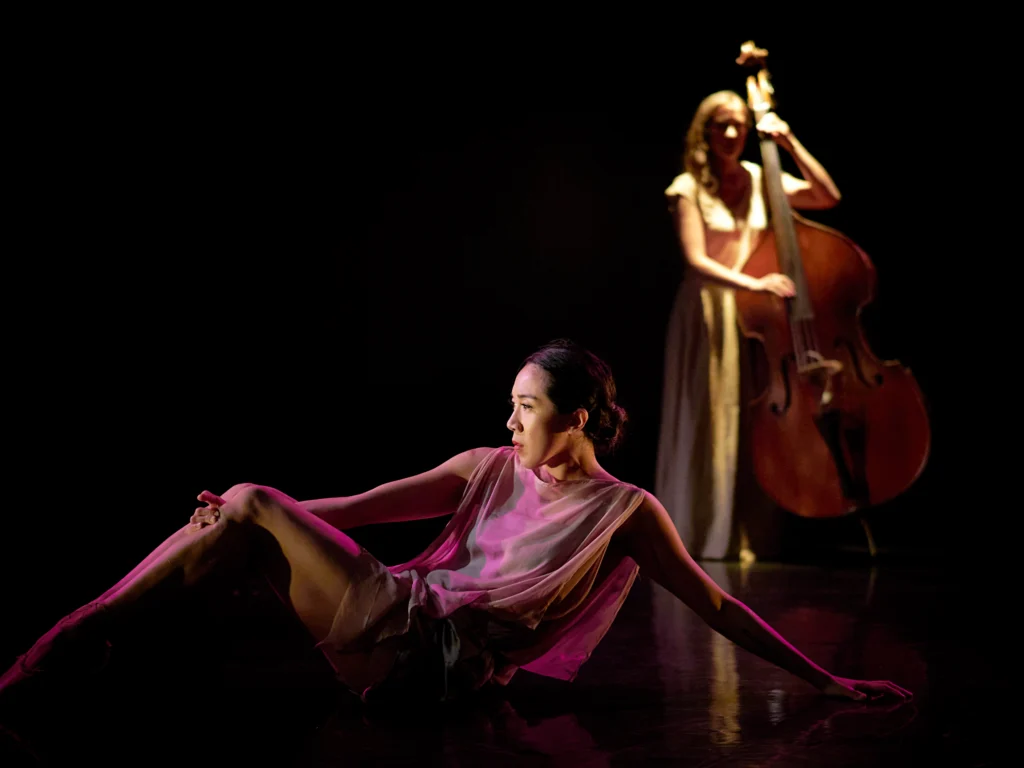How 3 Dancers Are Launching Their Choreography Careers
“I know how to do choreography,” says Alexandra F. Light. “That’s the easy part.” The Texas Ballet Theater principal dancer, who is launching her choreography career, says that the hard part is, well, everything else—the fundraising, budgeting, networking, and marketing that come along with getting dance onstage.
Light has been making dances since childhood, but when she decided to pursue choreography professionally, “I felt like, ‘Where do I go? How do I do this?’ ” Since there’s no instruction book, we asked Light, freelancer Tiffany Mangulabnan, and Boston Ballet artist My’Kal Stromile for advice on the different ways they’re building their dancemaking careers.
Alexandra Light
Since Light is also a visual artist, she started with connections in that community. She pitched a piece called Inside Voices to the director of performance programming at the Modern Art Museum of Fort Worth. “She was like, ‘I love this, when can we put it on?’ ”

Putting on a performance entails a lot of logistics, which Light juggles on top of her full-time job at TBT. “I have my planner with me all the time,” she says. “There are definitely days when I’m like, This is too much. You have to take a day off, or you’re going to get burned out.”
Networking has led to choreography commissions from Texas Ballet Theater, Katzen Arts Center of American University, USA International Ballet Competition participants, and the recording artist Laura Brehm. Last July she was one of just two artists chosen from 400 applicants for a creative residency at Frank Lloyd Wright’s Martin House in Buffalo, New York. “You start to get opportunities outside your own bubble, and that told me that people are starting to recognize my work,” she says.

Mentorship is another inspiring tool for Light, who sent cold emails to three of her favorite female choreographers and got informational interviews with two of them. “The biggest advice I got was to follow my own path,” she says. “You just have to keep going.”
Tiffany Mangulabnan
Trained at Philippine Ballet Theater, Tiffany Mangulabnan joined the company at 15, rising to principal dancer. At 22 years old she moved to New York City and joined BalletNEXT. She started making dances out of necessity, after co-founding the independent company konverjdans with fellow dancers Amy Saunder and Jordan Miller in 2016. “We had no money, so we made our own work,” Mangulabnan recalls. “I made my first solo piece in 2017, and I realized I do want to do this.”

Mangulabnan creates one work a year for konverjdans, and she reaches out to a small network of private donors—a mix of family, friends, and dance patrons she’s met over the course of her career who’ve taken interest in her work—to underwrite it. Commissions from the Barnard College dance department, Women in Motion, and Carolina Ballet have come by word of mouth. She plans to be more proactive about getting choreography jobs this year, but her time is divided between co-directing konverjdans, teaching, assisting choreographer Caili Quan, and dancing for the Metropolitan Opera and companies like Gabrielle Lamb’s Pigeonwing Dance.
“I’ve had to accept that there are weeks or months when I have no time for myself,” she says. “I’m running to class, then rehearsing, I’ll be eating my lunch on the subway. It’s tough work.” Meditation helps her filter out the stress and clarify her mind. “Every piece I’ve ever performed, and every choreographer I’ve worked with, is in my body,” she says. “The fact that I get to run around and do all this work feeds my creativity and my choreographic voice.”

My’Kal Stromile
One of the first things My’Kal Stromile did when he joined Boston Ballet II in 2018 was tell artistic director Mikko Nissinen that he wanted to pursue choreography. Nissinen has supported him with commissions for BBII and, in 2023, his first main-stage work, Form and Gesture. When Stromile took his bows on opening night, he says, “I was like, ‘This is what I’m supposed to be doing.’ ”

Stromile got his first taste of dancemaking while earning his BFA at Juilliard, and estimates he’s created 25 works since graduating—including 10 last year alone. Most of Stromile’s commissions, from companies like Dallas Black Dance Theatre and organizations like Center of Creative Arts in St. Louis, have come through personal connections; one even arose after an artistic director watched an audition video Stromile had choreographed for another dancer.
Stromile joined Boston Ballet’s main company in 2019, and he actively makes use of its resources. For example, William Forsythe, who has a longstanding relationship with the company, is his mentor. “He’s constantly challenging me to think about what I’m presenting and why,” Stromile says. “What happens if you turn this, or move this?” Stromile, who aspires to be an artistic director and freelance choreographer, also sits on the company’s Employee Council, working with Nissinen and senior management on diversity, equity, and inclusion. “I’m getting a lot of inside information about how companies are run, how nonprofits get support, long-term planning, and budgeting.”

Despite still enjoying dancing, Stromile no longer performs off-season. “If I’m working closely with another choreographer, I start to see things popping up in my own work,” he says. “I keep a defining line between what I’m trying to say versus what another choreographer is trying to say.” He’s now confident enough in his artistic voice and business skills that he’s planning to become a full-time choreographer in the near future. “I feel this burning desire to make a statement for myself as a dancemaker,” he says. “I’m excited for the journey.”







